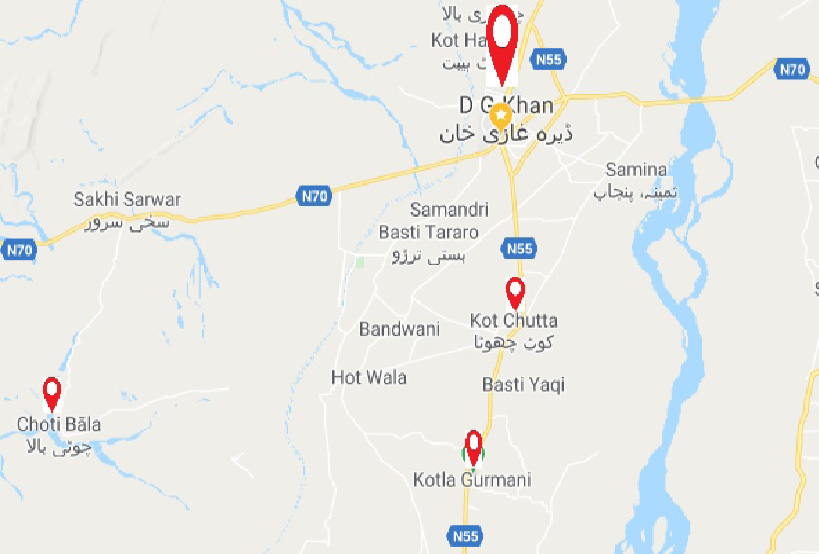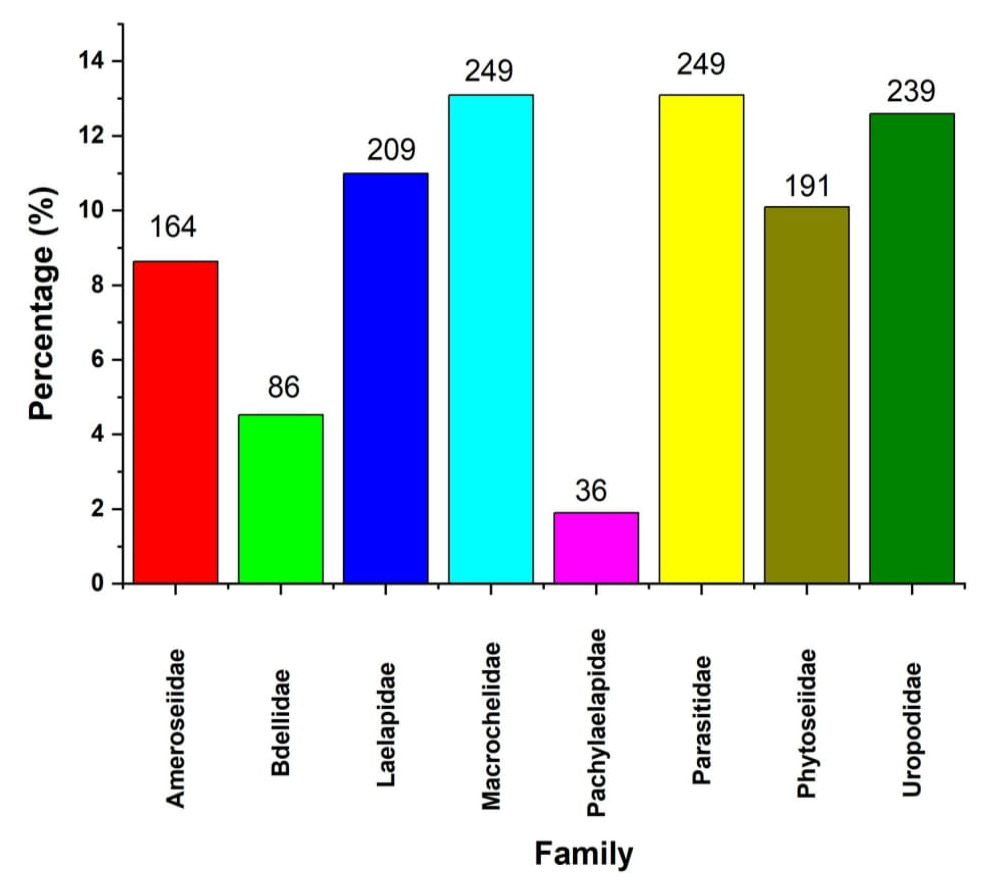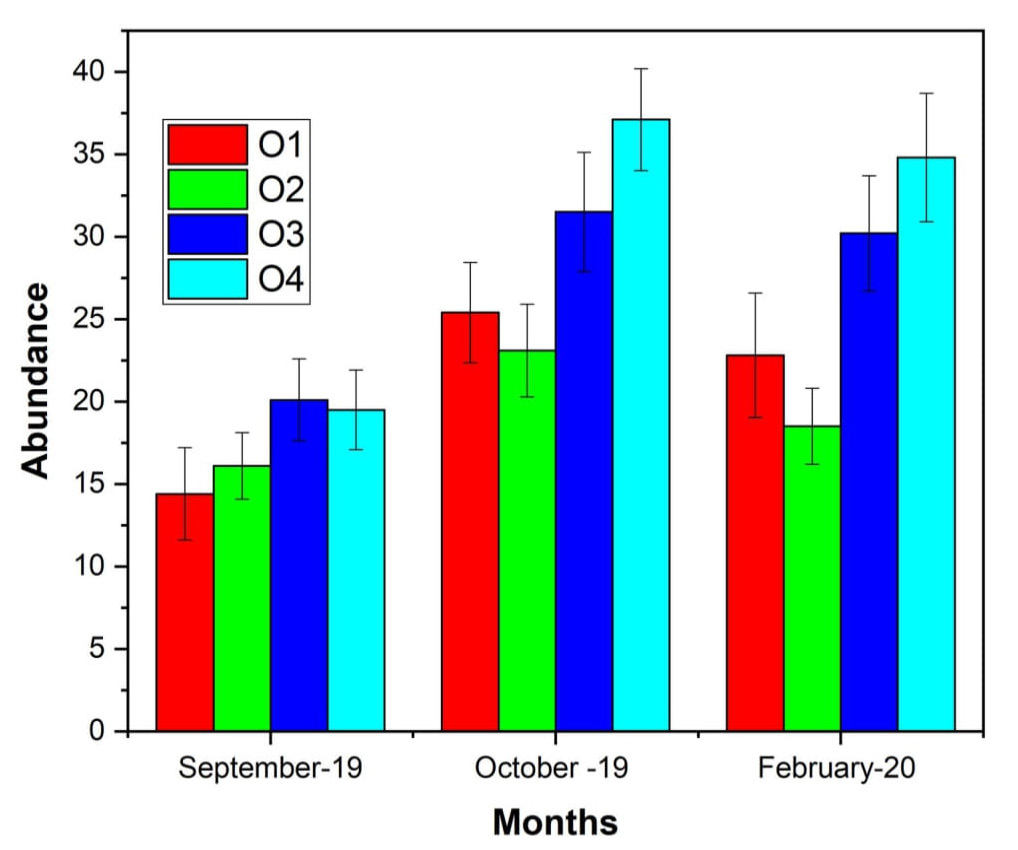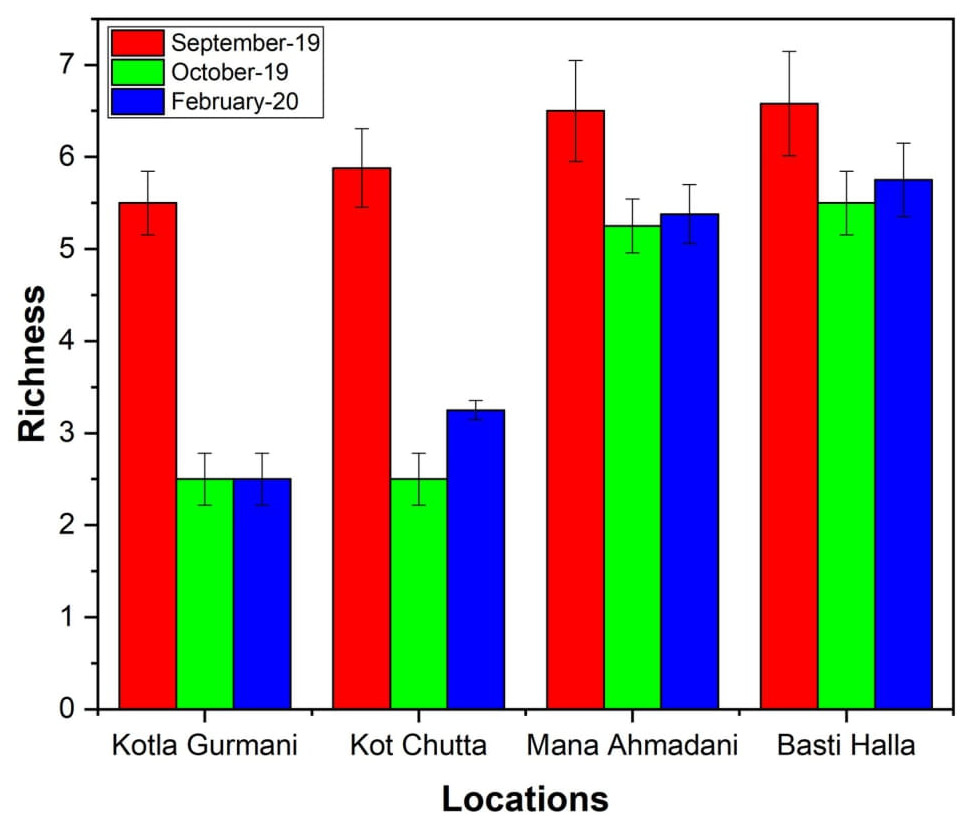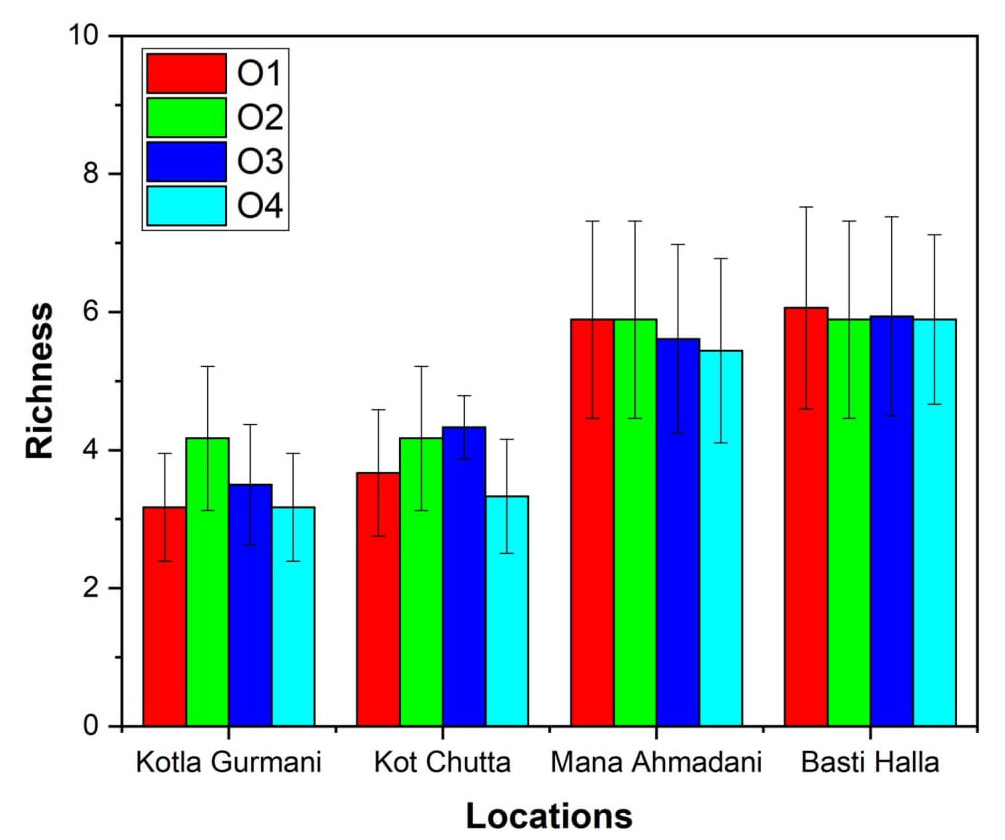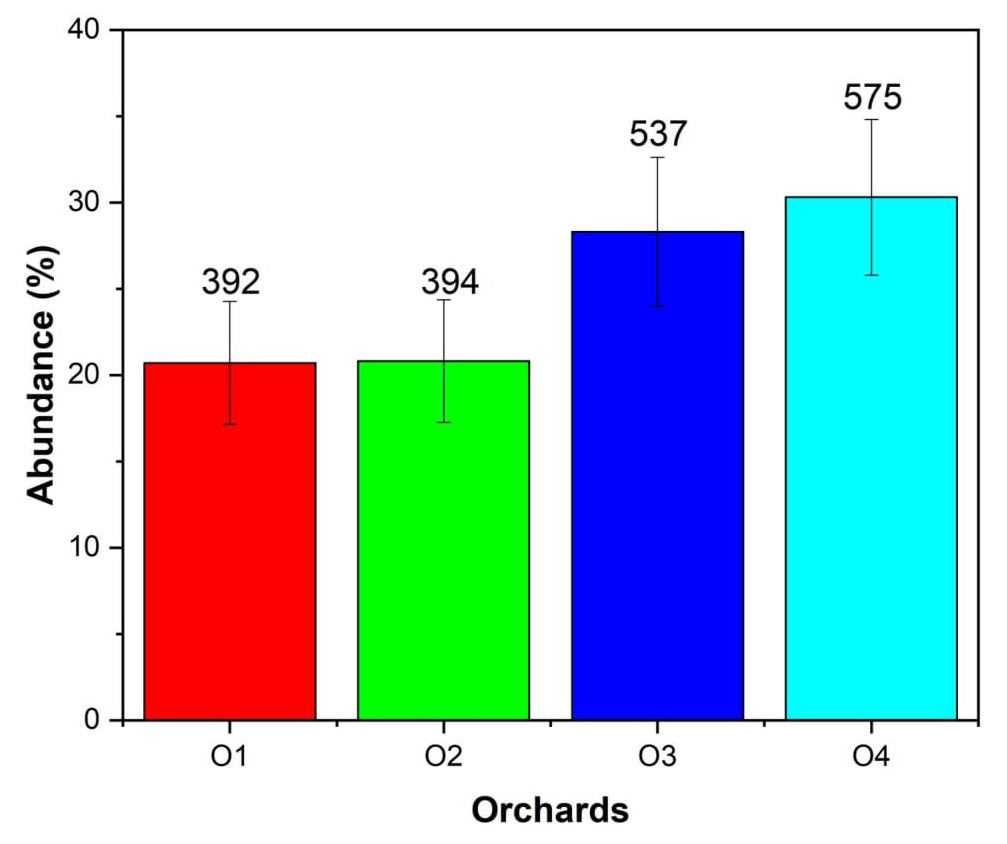Soil Inhabiting Mite Diversity (Acari) of Mango Orchards from Dera Ghazi Khan, Pakistan
Soil Inhabiting Mite Diversity (Acari) of Mango Orchards from Dera Ghazi Khan, Pakistan
Bilal Saeed Khan1*, Muhammad Arslan1, Abdul Ghaffar2, Muhammad Farooq2, Saghir Ahmad3, Sami Ullah4 and Awais Rasool5
Location mark in the Map shows the localities of orchards in D. G. Khan from where samples were collected.
Number (%age) of various mite families from different orchards, Dera Ghazi Khan. The error bars represent standard errors of mean values.
Abundance of mite families in different months with respect to different locations. The error bars represent standard errors of mean values.
Abundance of mite families in different locations with respect to orchards types. The error bars represent standard errors of mean values.
Abundance of mite families in different orchards with respect to months. The error bars represent standard errors of mean values.
Richness of mite families in different locations with respect to months. The error bars represent standard errors of mean values.
Richness of mite families in different locations with respect to orchards type. The error bars represent standard errors of mean values.
Intercropping effect on abundance of mite families in different locations. The error bars represent standard errors of mean values.
Intercropping effect on abundance of mite families in different orchard type. The error bars represent standard errors of mean values.




